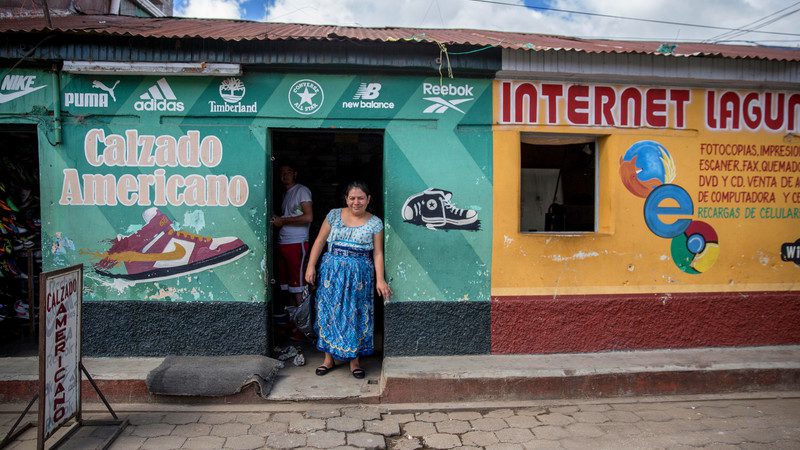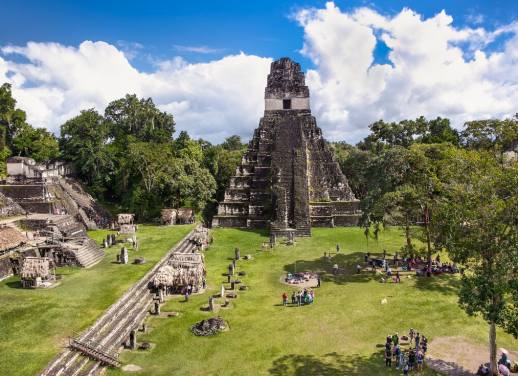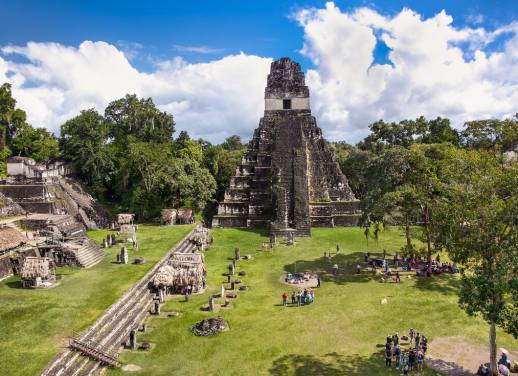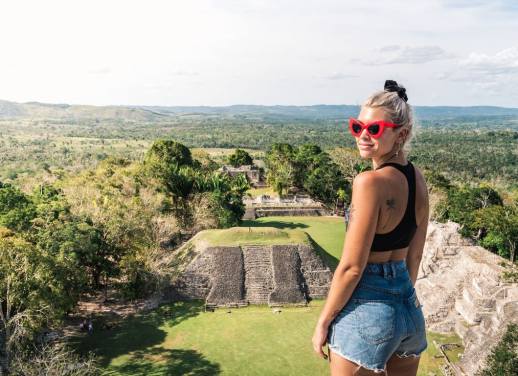With a smiley flash of her silver-capped teeth and a beckoning gesture, the deed was done. I was officially paired with my new Mayan mama.
I’m travelling on Intrepid’s Epic Central America adventure, and have just arrived in San Jorge La Laguna, a neat and modest hillside village on the banks of the mighty Laguna Atitlan. Laguna (or Lake) Atitlan is Guatemala’s second largest inland lake, and is characterised by two key features; firstly, the dominating twin volcanoes which wisely watch over the lake, and secondly, the diverse Indigenous Mayan communities which dot the shoreline of the lake. For the night, my travelling companions and I would call one of these communities home.
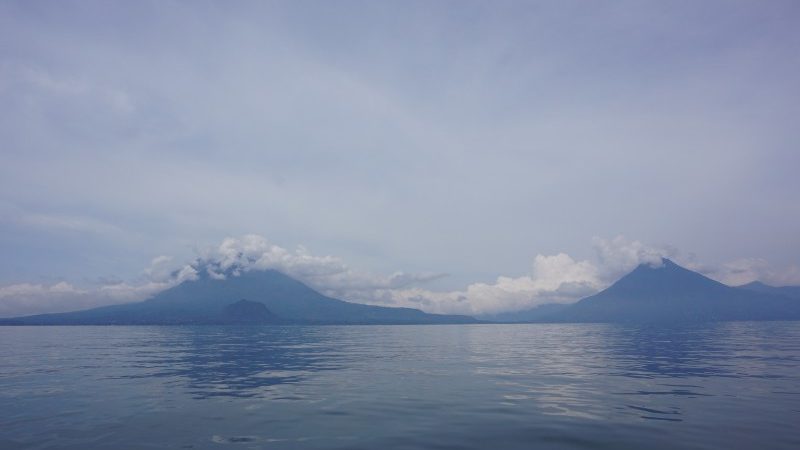
The twin peaks of Laguna Atitlan.
With our matching complete, my homestay mother Teresa leads me across the town square towards her house, and we chatter in my pitifully poor Spanish. Key points are covered quickly: I am Australian, she is Guatemalan; I am 26, she is 48; I am unmarried with no children, she is a widow with five children and one grandchild; I have been in Guatemala for a week, she has been in Guatemala for her entire life. I’m relieved to hear that we share so much in common.
THIS WRITER TRAVELLED ON OUR 58-DAY EPIC CENTRAL AMERICA TOUR
FIND OUT MORE HERE
Soon after I arrive, dusk settles and Teresa arms me with an umbrella. She gestures for me to go and explore her village. It’s Sunday evening, so the church bell is tolling loudly, reaching every pair of ears within a three kilometre radius. Despite retaining its pre-colonial indigeneity, Mayan community largely revolves around the church; nearly all these villages are staunchly Catholic.
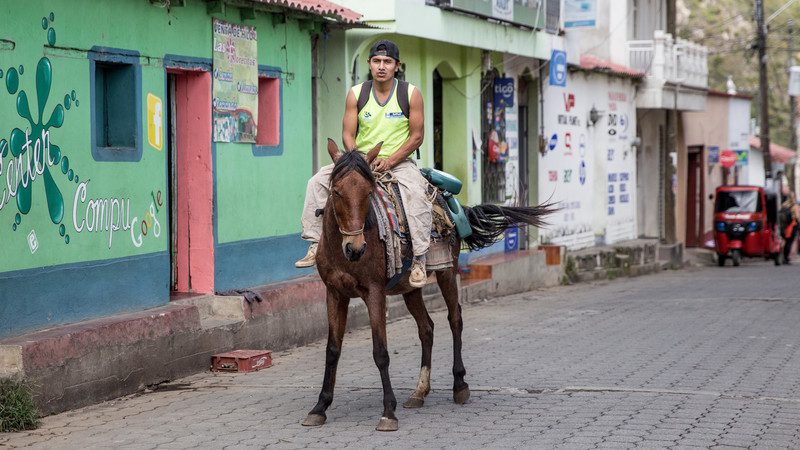
A local on his way through town.
The bells continue to clang, and families emerge from their homes. The ladies are dressed in intricate and delicate huipiles, a traditional Mayan blouse featuring complicated embroidery patterns which identify their community. Textiles and weaving are a prized yet common skill here, and are a key identifier of which Mayan population you belong to.
CHECK OUT OUR RANGE OF SMALL GROUP ADVENTURES THROUGH GUATEMALA HERE
As I continue to walk downhill to the lake viewpoint, local stragglers jog towards church. The church bell has now stopped, and they are late. Tardiness doesn’t hinder hospitality; they all shoot me a big smile, and a welcoming ‘hola’ as they jog past.
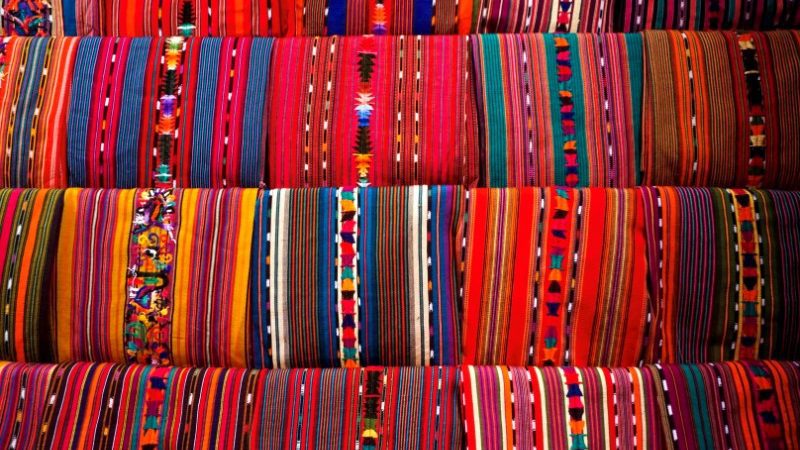
Colour is everywhere you look.
With the friendly Guatemalan disposition also comes prevalent disadvantage, particularly for Indigenous groups such as the Mayan communities. According to the CIA’s World Factbook, more than half of Guatemalans live in poverty. The national minimum wage sits around 81 Quetzals (that’s about $10 USD a day). With this poverty also comes a corrupt government and widespread inequality. However, amongst this, the spirit of the Guatemalan people shines through. Scores of self-empowered, grassroots organisations have established themselves and are driving the change they want to see in their country. The community of San Jorge La Laguna is cut of this cloth; they themselves are facilitating these homestays from within community itself.
RELATED: 12 FACTS YOU PROBABLY DON’T KNOW ABOUT GUATEMALA
A local resident looks after the administration and pairs travellers with San Jorge families, providing local employment and empowering families such as Teresa’s that would otherwise struggle economically. Teresa is a widow with young children and grandchildren. Without the homestays, she would struggle to find regular employment within the village. In addition, ‘host families are rotated evenly, as a means to spread the wealth equally amongst the village,’ explains my trip leader Jorge.
As darkness descends and rain starts to fall, my umbrella and I return to Teresa’s modest house. She lives in a traditional bajareque; a brick house with a roof of tin, with earth floors, and a stove/fireplace. There are two bedrooms. My travel companion and I are in one; the rest of the family is in another. I feel immensely guilty, however the children assure me that there is plenty of room. I reluctantly accept. Mayan family ties are strong; shared housing of multiple generations is very common. However, this is largely due to economic need rather than choice of affection.
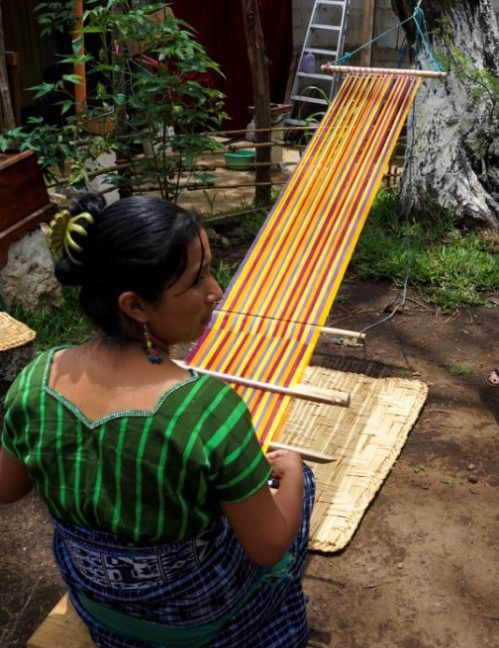
Textiles with tales; each piece tells a story of which community it belongs to.
Prior to dinner, I spend the evening sitting on the concrete stairs of the house, practicing my Kaqchikel with Teresa’s sons. A hoarse language, phonetically akin to German, Kaqchikel is the primary language in San Jorge. It is one of 20 Indigenous languages in Guatemala, and like textiles, the Mayan language groups define which Maya sub-group a person belongs to. The next lakeside village, only a few kilometres away, speaks an entirely different dialect that is incomprehensible to most San Jorge residents. However, Guatemala is making strides in including and incorporating its Indigenous culture and traditions into its national fabric; Kaqchikel is now taught in public schools through Guatemala’s intercultural bilingual education programs. This is a huge step in the right direction for Mayan Indigenous reconciliation after a long tragic history of Indigenous dispossession of lands and the use of Mayans for forced labour on cocoa and indigo plantations in colonial times.
RELATED: WHAT’S THE MOST IMPORTANT TRAIT A TRAVELLER CAN HAVE? THIS.
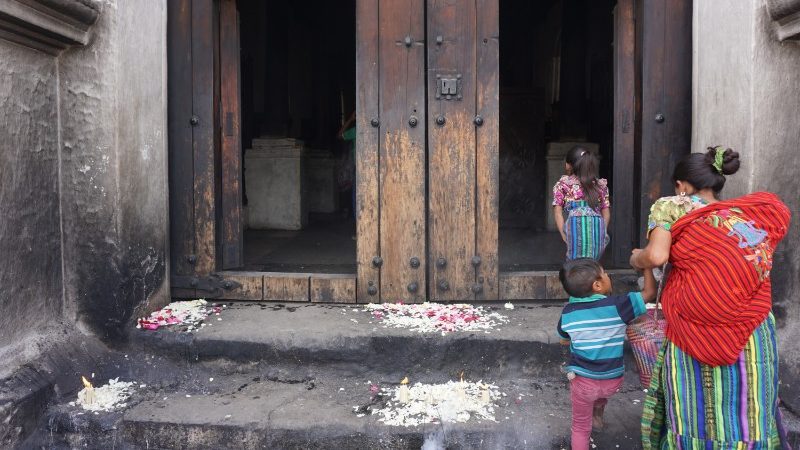
Young Mayan families off to church.
It’s dinnertime, and the family gathers around the dining table. Teresa presents a bowl of yellow dough in the middle of the dining room table. With the precision of an experienced heart surgeon, she picks a piece of dough, and expertly shapes it into a tortilla ready for frying. The pitter-patter of the dough passing between her left and right hands makes the process look entirely effortless. With her invitation, I participate. In a matter of seconds, with the delicacy of a blind bricklayer, my mutilated ball of corn dough splats on the ground. I look at her, failure registering on my face, and apologise profoundly. She and her kids burst into laughter; this must be the regular evening entertainment. Tortilla dough 1, foreign guest 0.
SUBSCRIBE TO INTREPID’S NEWSLETTER FOR TRAVEL TIPS, COMPETITIONS, GIVEAWAYS & MORE
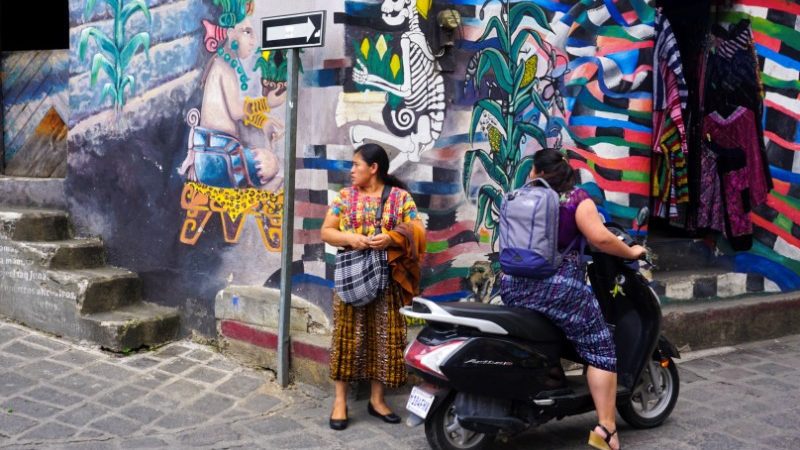
Modern Mayan ladies of Lake Atitlan.
After dinner, we drink tea and communicate as best we can, considering the language barrier. Although only being in her family’s presence for less than 24 hours, I feel immensely welcome in Teresa’s home in the tiny town of San Jorge. The homestay provides a small taster of the home life for so many Guatemalans, and is a first-hand experience of the community spirit that is driving the country from the bottom up. It is a unique experience and a humbling reminder that home can be made no matter where you are in the world; the only ingredients that you require are family, a home-cooked meal, and a bit of good company.
Experience life at a homestay on any of these small group adventures in (and around) Guatemala now.
Feature image by Lucy Piper.

